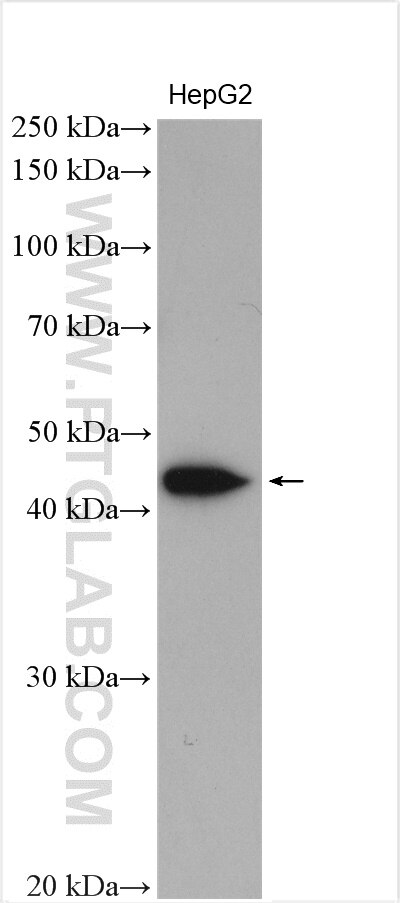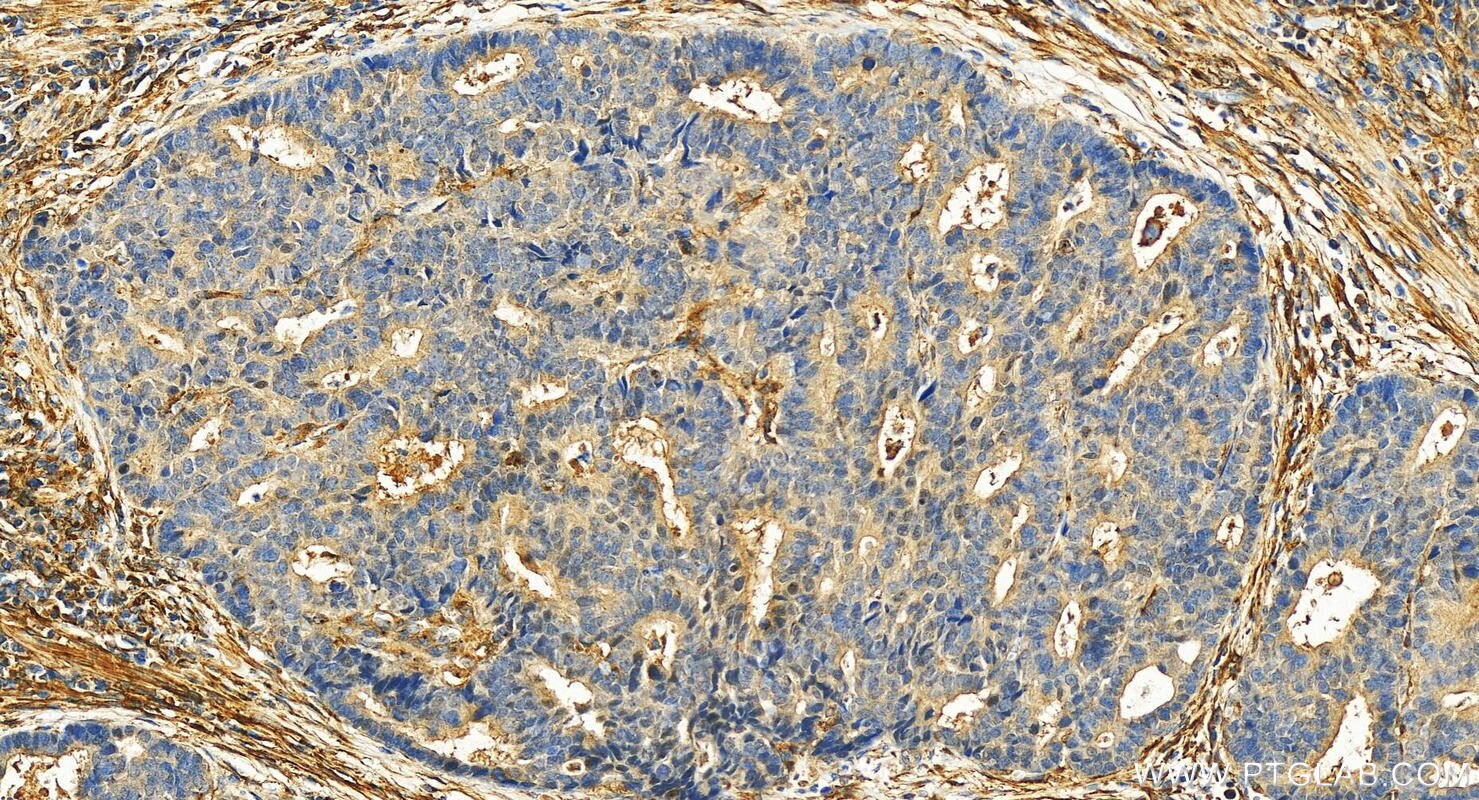Tested Applications
| Positive WB detected in | HepG2 cells, SW480 cells, HeLa cells |
| Positive IHC detected in | human stomach cancer tissue Note: suggested antigen retrieval with TE buffer pH 9.0; (*) Alternatively, antigen retrieval may be performed with citrate buffer pH 6.0 |
Recommended dilution
| Application | Dilution |
|---|---|
| Western Blot (WB) | WB : 1:500-1:2000 |
| Immunohistochemistry (IHC) | IHC : 1:50-1:500 |
| It is recommended that this reagent should be titrated in each testing system to obtain optimal results. | |
| Sample-dependent, Check data in validation data gallery. | |
Product Information
27602-1-AP targets ASPN in WB, IHC, ELISA applications and shows reactivity with human samples.
| Tested Reactivity | human |
| Host / Isotype | Rabbit / IgG |
| Class | Polyclonal |
| Type | Antibody |
| Immunogen | ASPN fusion protein Ag26380 Predict reactive species |
| Full Name | asporin |
| Calculated Molecular Weight | 384 aa, 44 kDa |
| Observed Molecular Weight | 43 kDa |
| GenBank Accession Number | BC063114 |
| Gene Symbol | ASPN |
| Gene ID (NCBI) | 54829 |
| RRID | AB_3085974 |
| Conjugate | Unconjugated |
| Form | Liquid |
| Purification Method | Antigen affinity purification |
| UNIPROT ID | Q9BXN1 |
| Storage Buffer | PBS with 0.02% sodium azide and 50% glycerol , pH 7.3 |
| Storage Conditions | Store at -20°C. Stable for one year after shipment. Aliquoting is unnecessary for -20oC storage. 20ul sizes contain 0.1% BSA. |
Background Information
ASPN, also known as periodontal ligament-associated protein1 (PLAP1), is an extracellular matrix (ECM) protein. The calculated molecular weight of ASPN is 43 kDa. It belongs to the small leucine-rich proteoglycans (SLRPs) family and contains a unique aspartate-rich N terminus that distinguishes it from other SLRPs family members. It was firstly identified in human cartilage and it was associated with the pathogenesis of bone and joint diseases, including osteoarthritis, intervertebral disc degeneration and periodontal ligament mineralization (PMID:11152692; 26089687).
Protocols
| Product Specific Protocols | |
|---|---|
| WB protocol for ASPN antibody 27602-1-AP | Download protocol |
| IHC protocol for ASPN antibody 27602-1-AP | Download protocol |
| Standard Protocols | |
|---|---|
| Click here to view our Standard Protocols |







